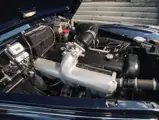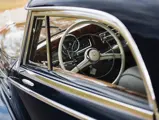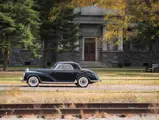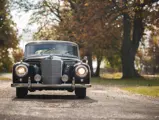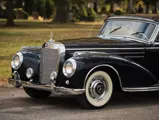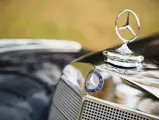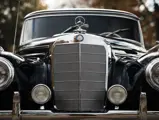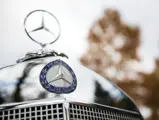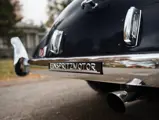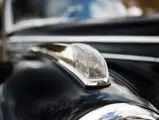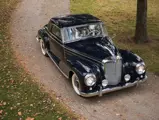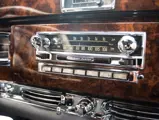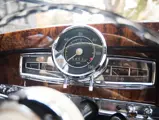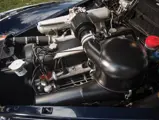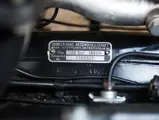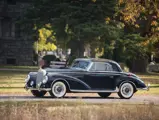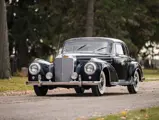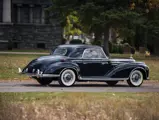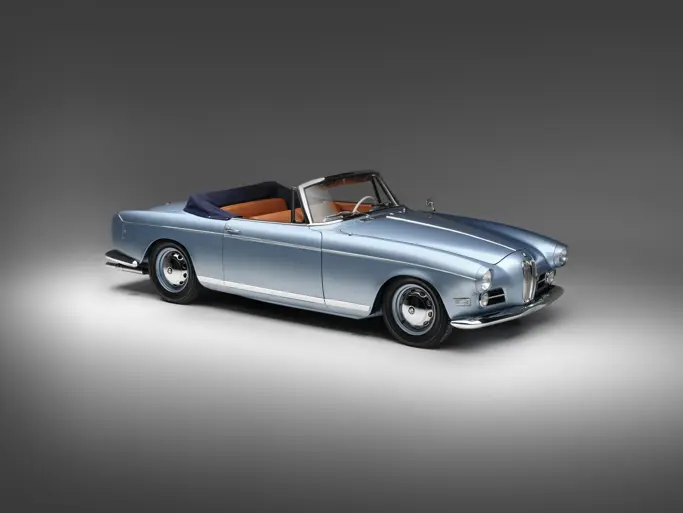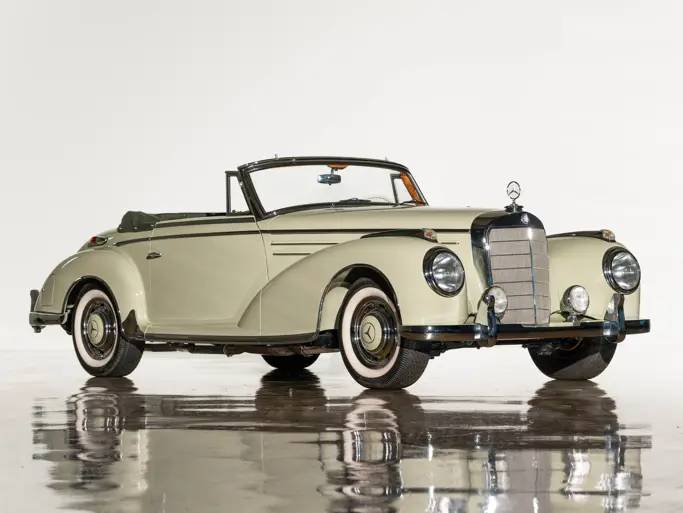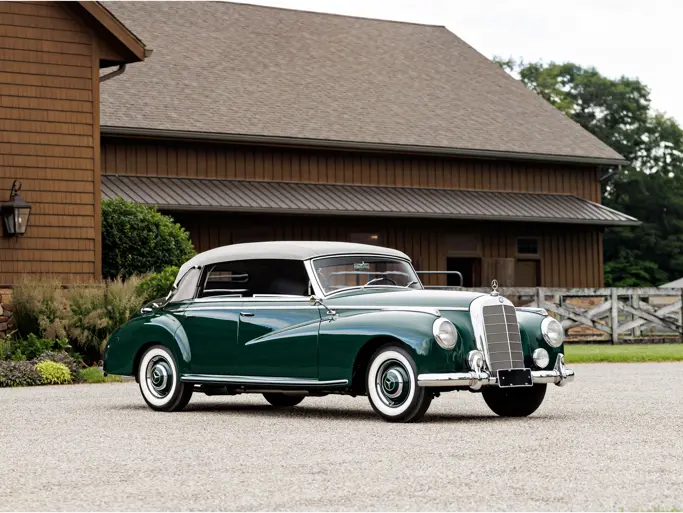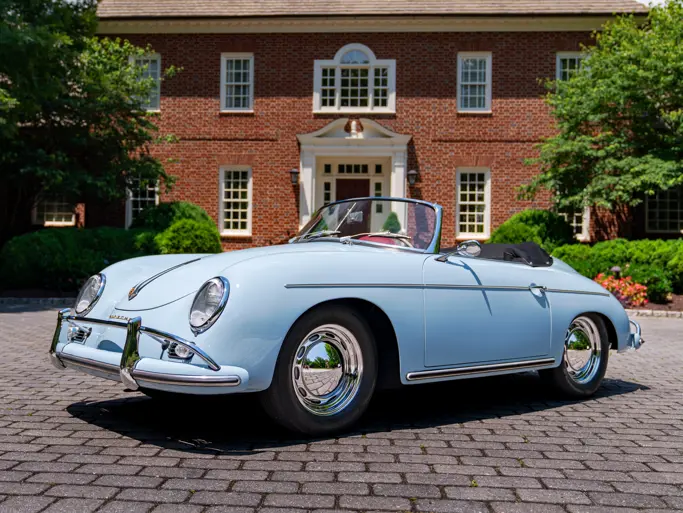New York - Driven By Disruption 2015
1955 Mercedes-Benz 300 Sc Coupe
{{lr.item.text}}
$600,000 - $800,000 USD | Not Sold
 | New York, New York
| New York, New York
{{internetCurrentBid}}
{{internetTimeLeft}}

- A hand-built automobile in an era of mass production
- One of 98 genuine 300 Sc Coupes built
- The fastest early post-war Mercedes-Benz
- High-quality restoration by Charles Brahms
175 hp (DIN), 2,996 cc OHC inline six-cylinder engine with Bosch mechanical fuel injection, four-speed manual transmission, independent front suspension with tube shocks and coil springs, single-pivot rear swing axle with tube shocks and coil springs, and four-wheel hydraulic drum brakes. Wheelbase: 114.25 in.
If a Mercedes-Benz enthusiast does not own a 300 SL Gullwing, that is the car that he or she is likely to aspire to own. It is said by aficionados, however, that those who already own a Gullwing aspire to own a 300 Sc, one of the distinctive personal luxury cars hand-built in very small numbers by Mercedes-Benz between 1952 and 1958.
The 300 Sc was the logical conclusion of the first phase of the Daimler-Benz recovery strategy when the company was allowed to begin making cars again after the end of World War II. The strategy had three major elements: make an affordable range of automobiles for buyers such as small business owners, taxi drivers, and professionals who needed practical transportation; revive the racing program to regain global publicity for the quality of the company’s products; and build luxury automobiles that would re-establish the company’s claim to be the brand of choice for the wealthy and influential.
Accordingly, at the first post-war Frankfurt Auto Show in April 1951, the company displayed an improved version of the inexpensive 170 S, built on the W187 chassis, and next to it the imposing 300 limousine on the W186 chassis, suitable for heads of state. Two months later, the company introduced the 300 SL racecars on the W194 chassis, powered by a derivative of the 300’s engine. Then, in October 1951 at the Paris Auto Show, the company completed its strategic plan when it unveiled the 300 S on the W188 chassis, which could be special-ordered to be custom built in coupe, roadster, and convertible body styles, all powered by a street-tuned three-carburetor version of the racing engine.
Only 113 of the hand-built 300 S left the factory in 1952, but 353 were produced in 1953 as the model began to be used by celebrities and the influential. However, as other luxury manufacturers began finding their feet in the improving global economy by adding air conditioning and high-powered V-8 engines to their offerings, only 92 examples were delivered in 1954.
To sustain demand for its more luxurious but less well-equipped automobile, Mercedes-Benz introduced the 300 Sc at the Frankfurt show in September 1955, equipped with a Bosch fuel-injected engine developed for the W198 300 SL racecars. Nevertheless, even with the technical improvements, only 200 of the 300 Sc would be delivered (49 cabriolets, 53 roadsters, and 98 coupes, including the one offered here) before production of the 300 S and Sc line ended in 1958.
Everything that makes a Mercedes-Benz desirable is wrapped up in the 300 Sc: prestige, presence, and performance. It was the modern successor to the great supercharged cars of the late 1930s, in particular the handsome 540 K with its proud grille and separate front fenders, features which are echoed in the 300 Sc’s extended hoodline and fenders that flow gracefully over minimal running boards into a short rear end. In fact, on the Nürburgring, Karl Kling showed the benefits of the 300 Sc Coupe’s lighter, more aerodynamic body, efficient racing-bred engine, and responsive suspension by easily beating the 540 K’s own record on that famous course!
The 300 Sc Coupe offered here, chassis number 5500025, was restored by renowned marque specialist Charles Brahms of Irvine, California, who was probably the best-known and most respected 300 Sc expert on the West Coast during the 1990s. Restored to his usual high standards, it is an example that has accumulated only 58,522 miles throughout its life.
In its current ownership, the car has been carefully maintained. All critical suspension components, including the bearings, brakes, springs, shocks, and drivetrain, have been checked and rebuilt as-necessary, and the engine compartment and undercarriage have been detailed back to show quality. The interior has been extensively detailed as well, and overall the car presents with the outstanding jewelry-like presentation that Brahms’ work is known for. Though an older restoration, the car has been meticulously cared for and only shows minor signs of aging.
With the comfortable enclosed coupe body and its accommodating space for a driver and three passengers, this car can turn heads at the opera gala as easily as it satisfies driving desires on long-distance tours. That was certainly the idea: to build a car that was every bit the echo of the great Classics, in a modern vein.



